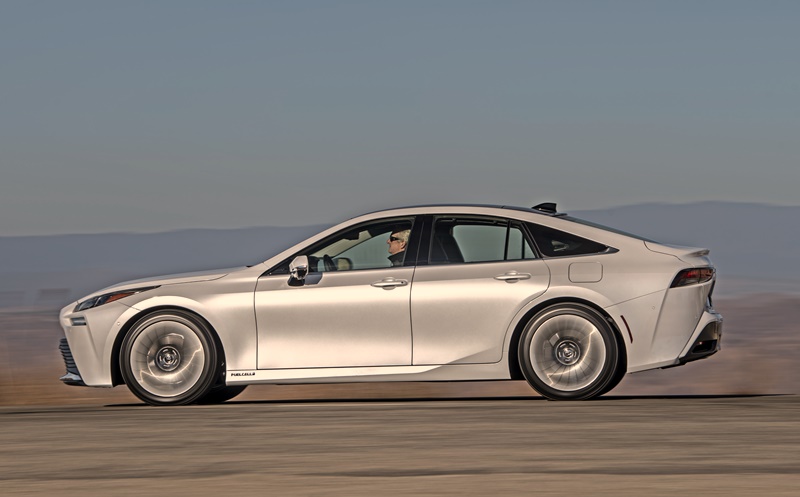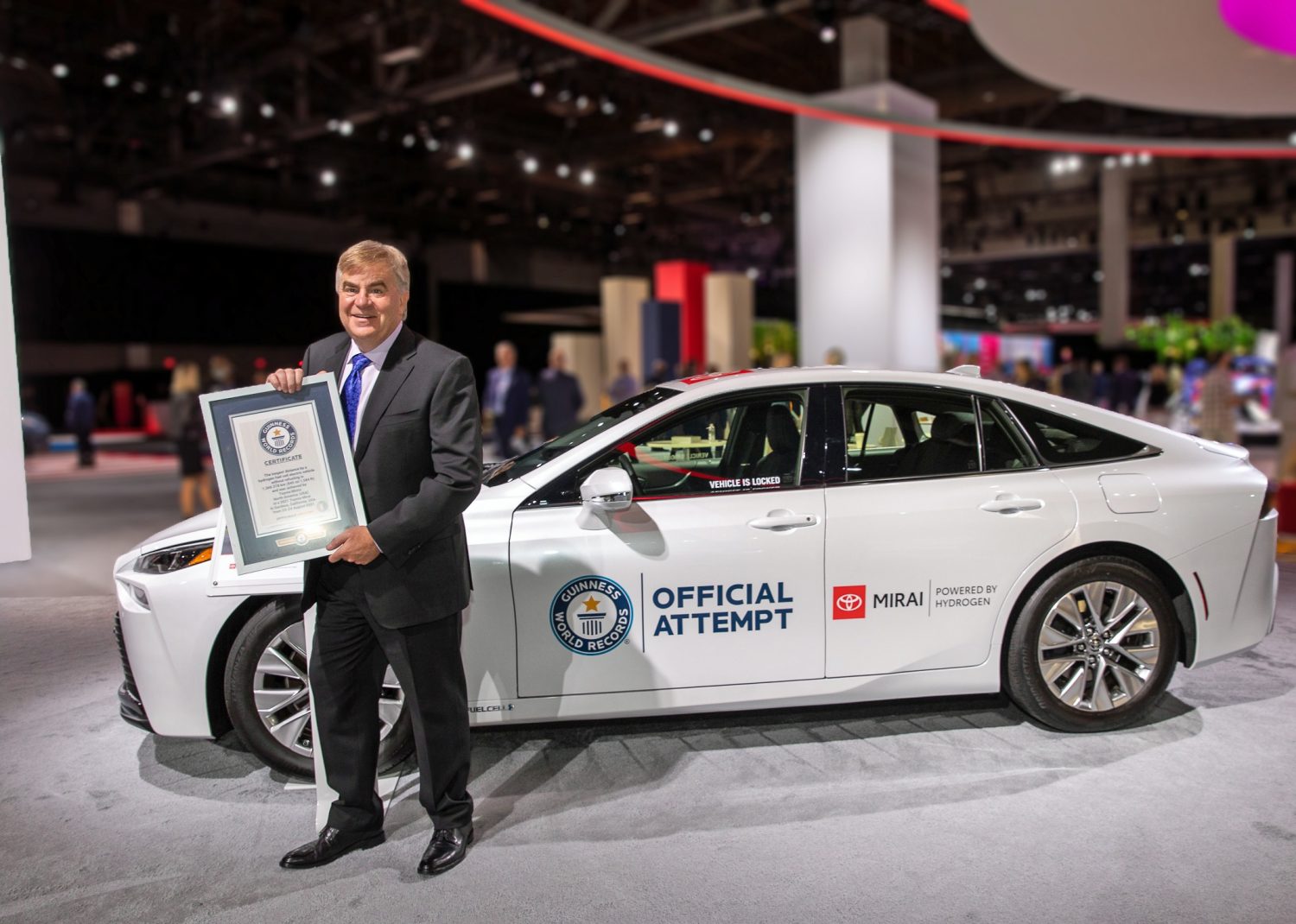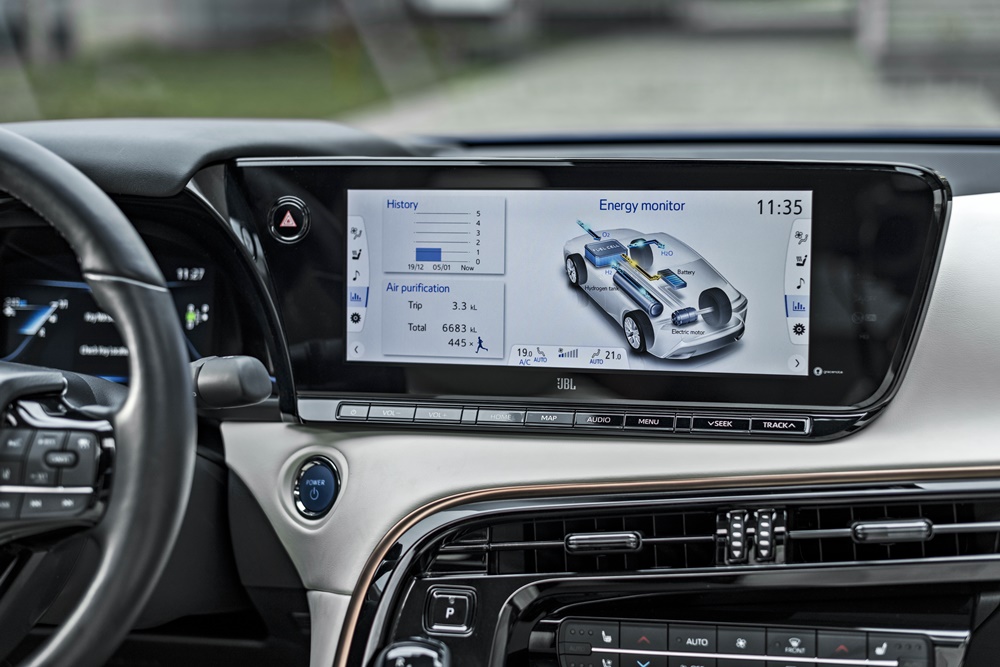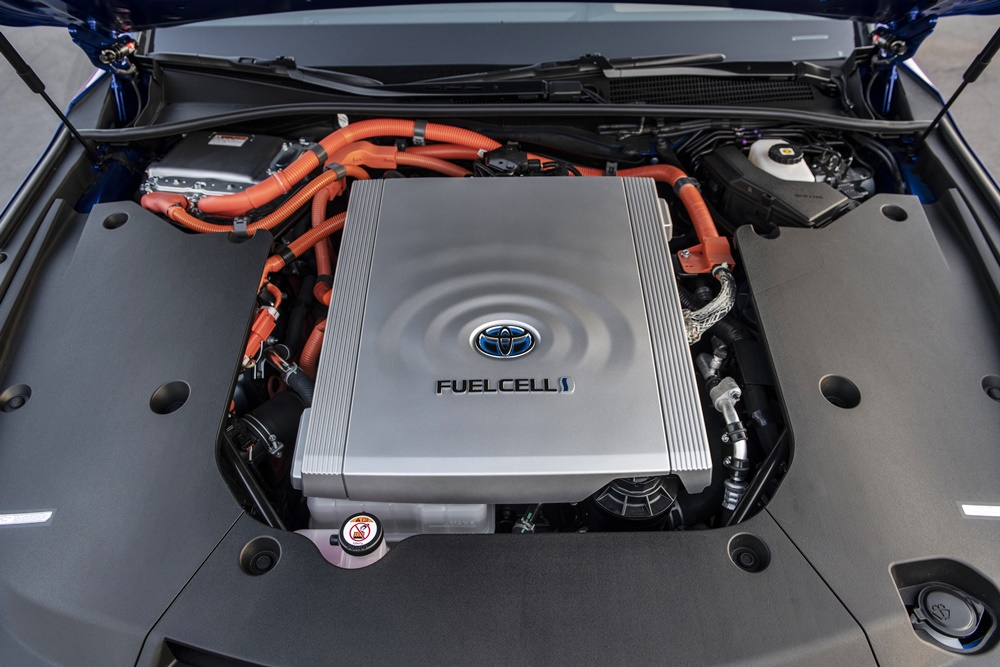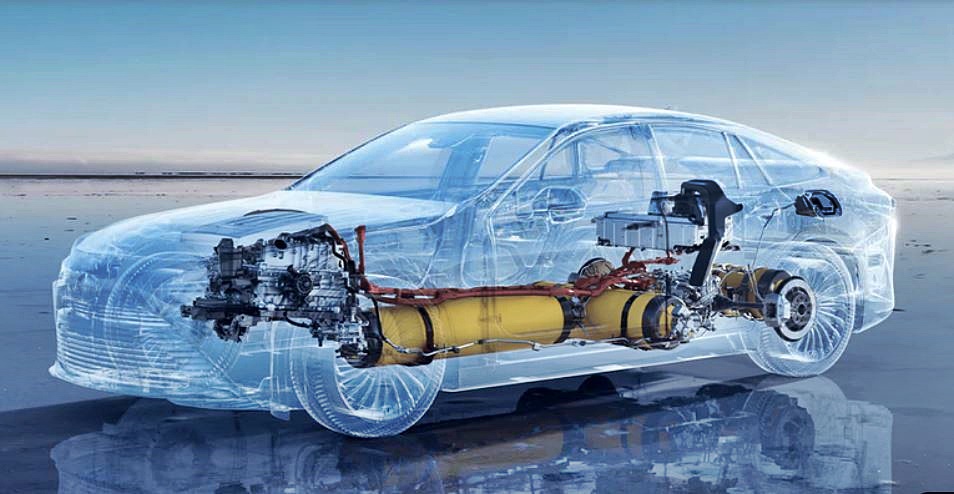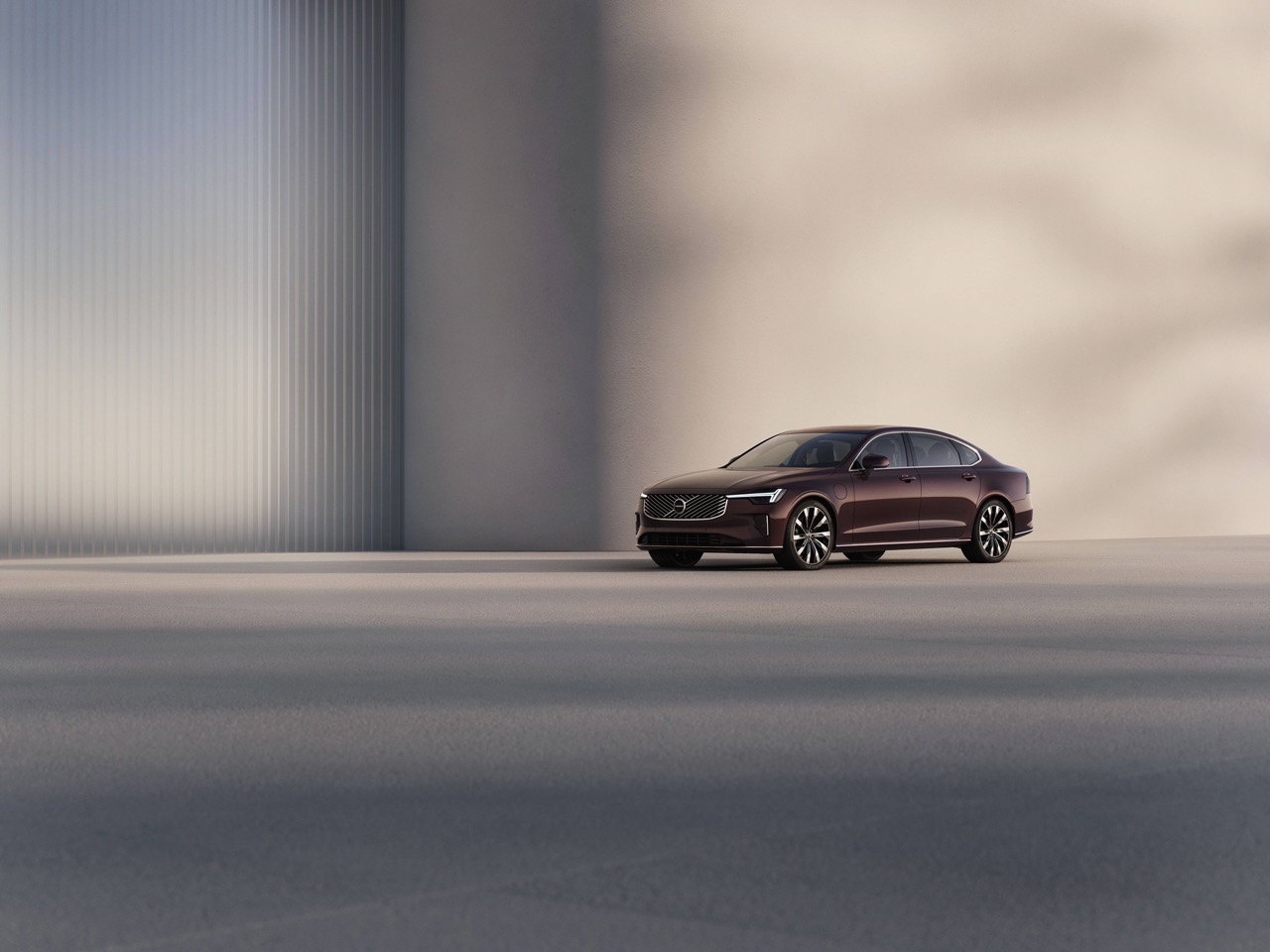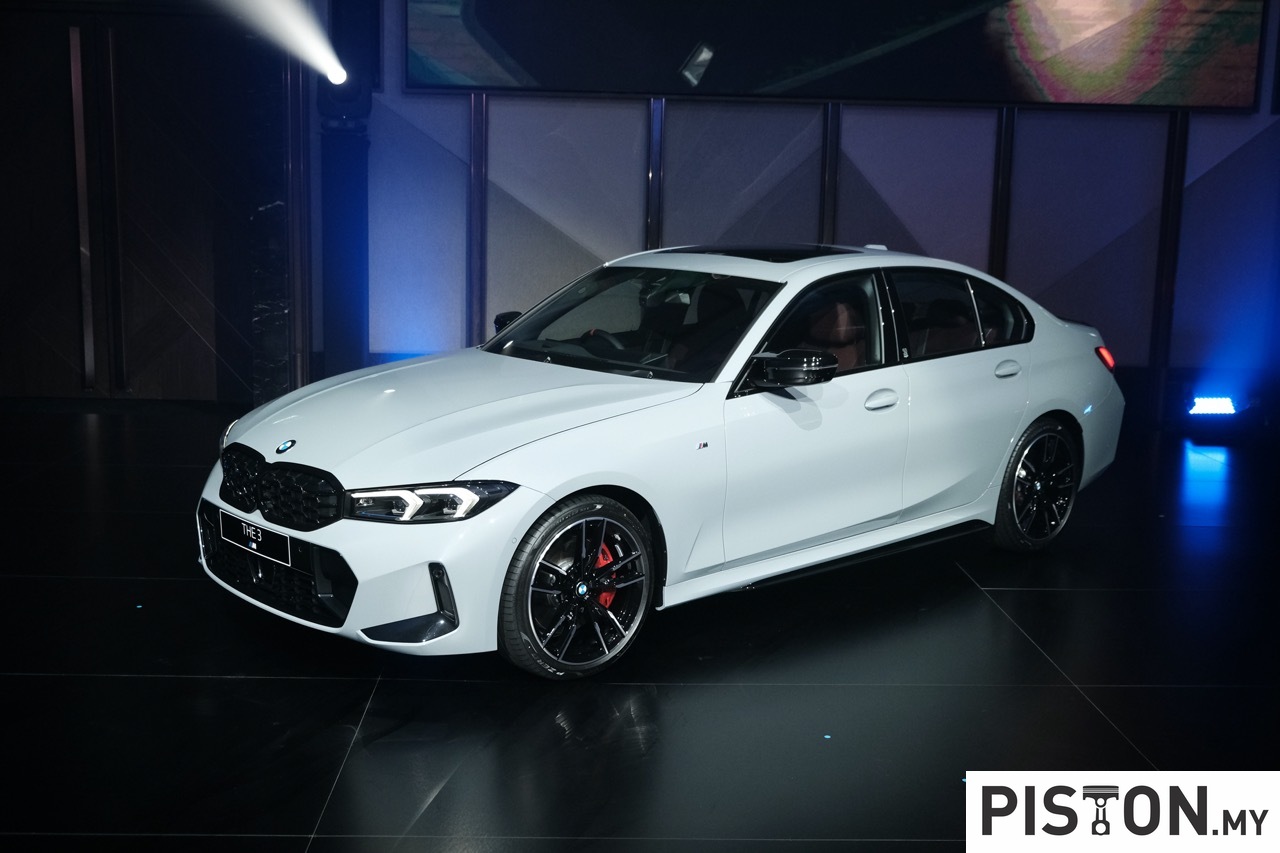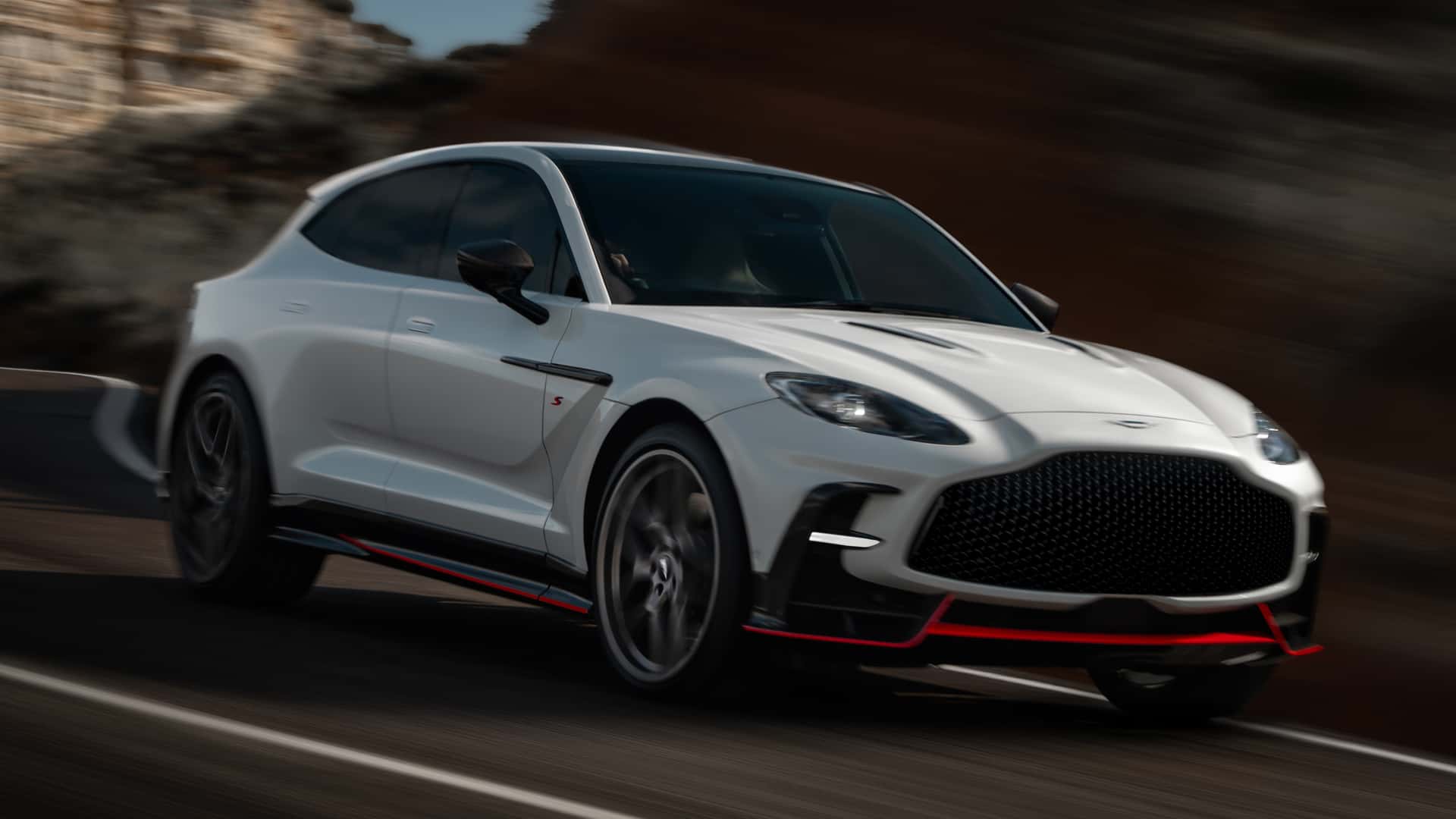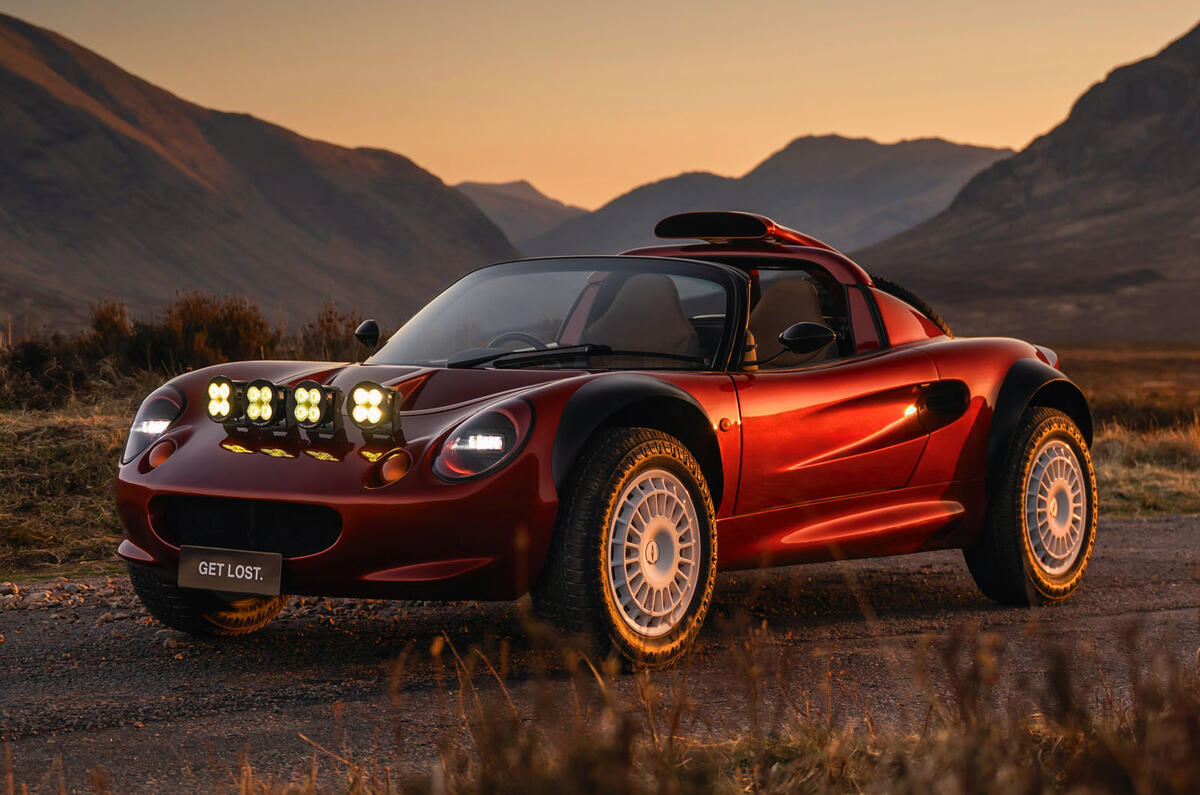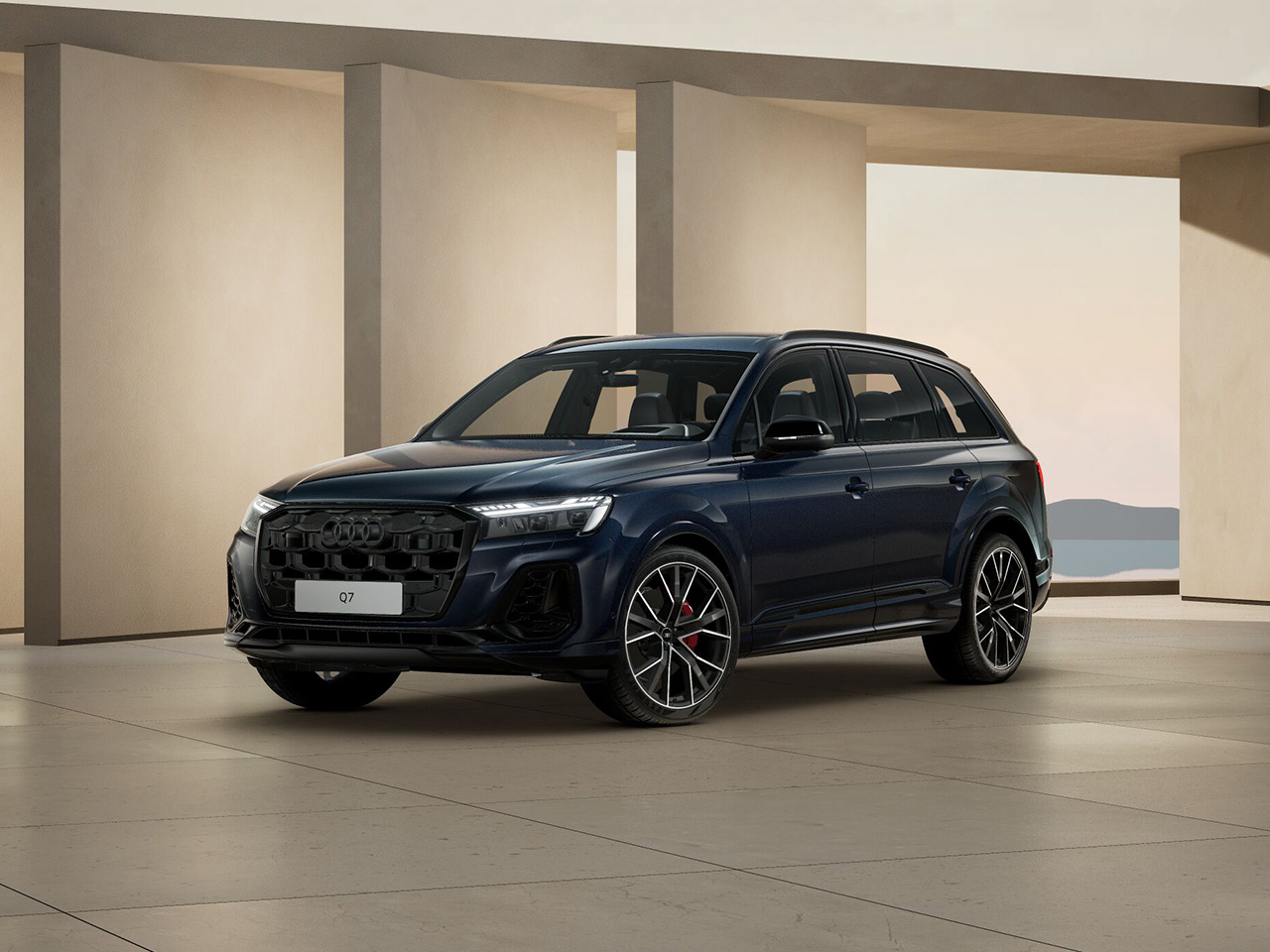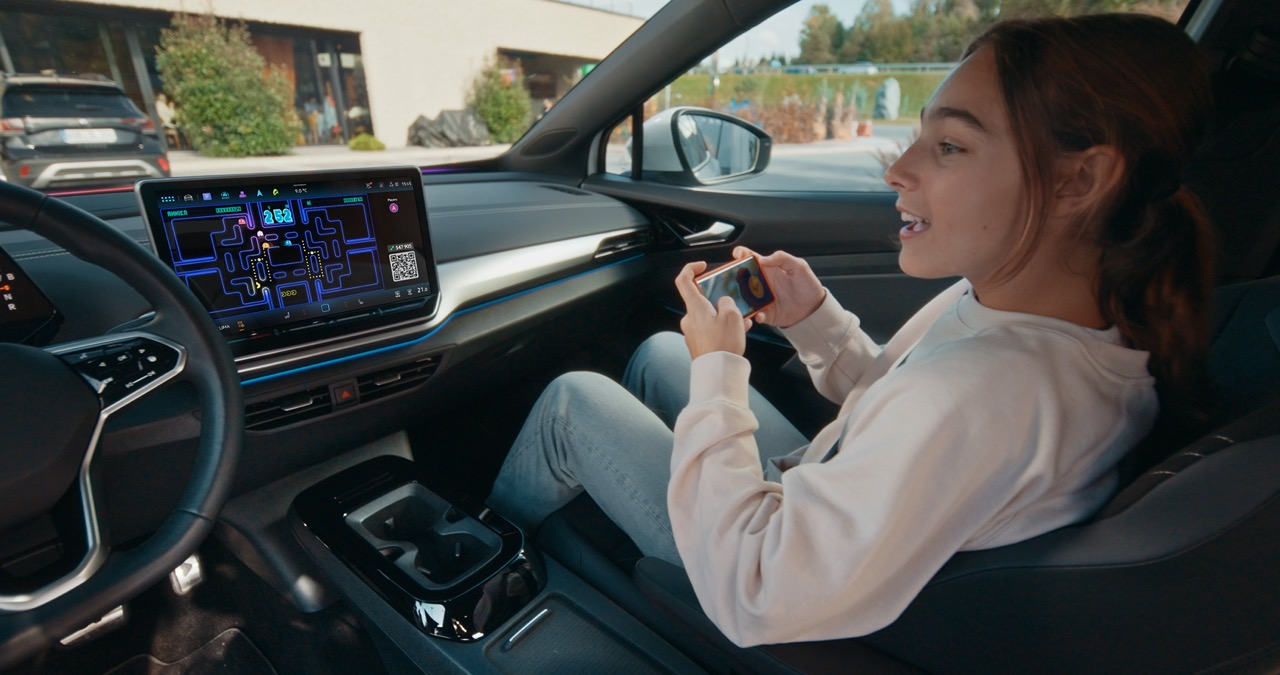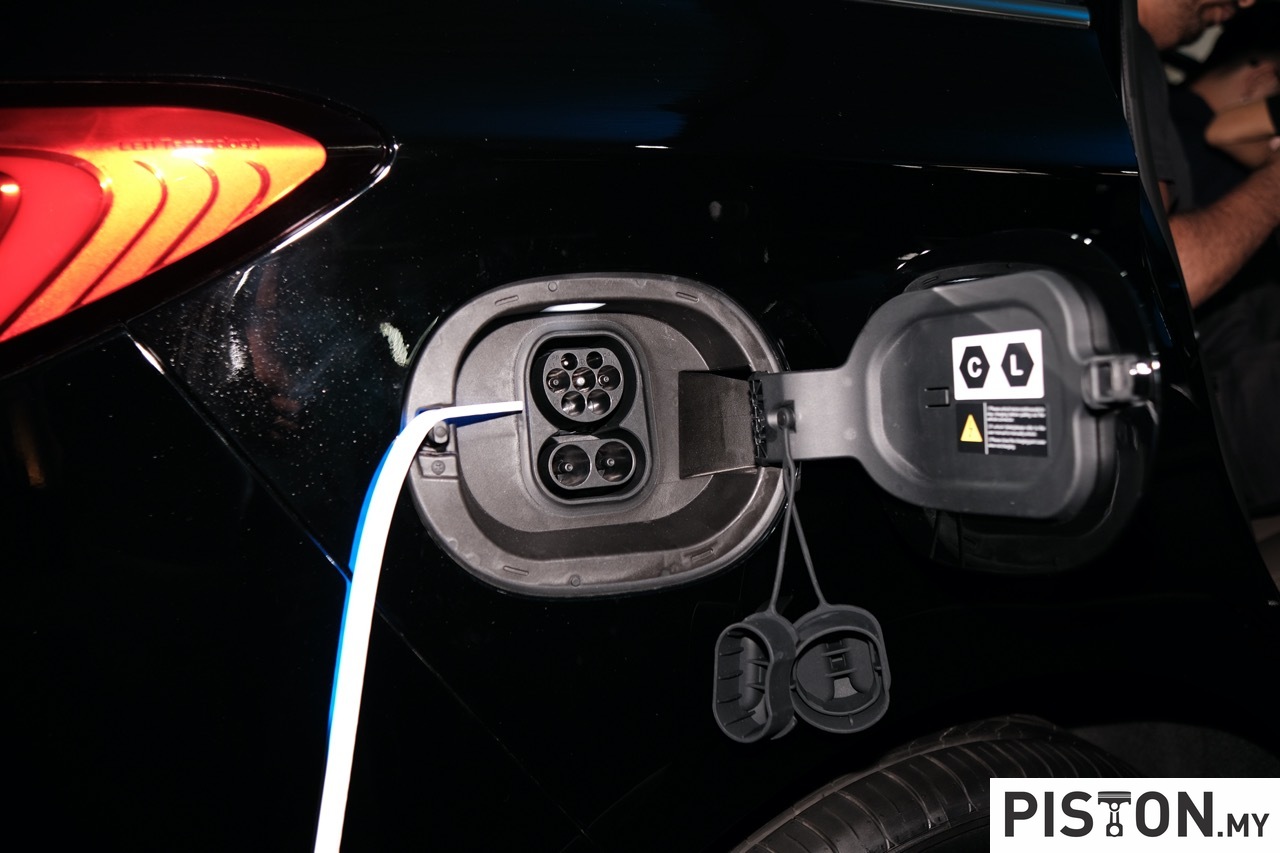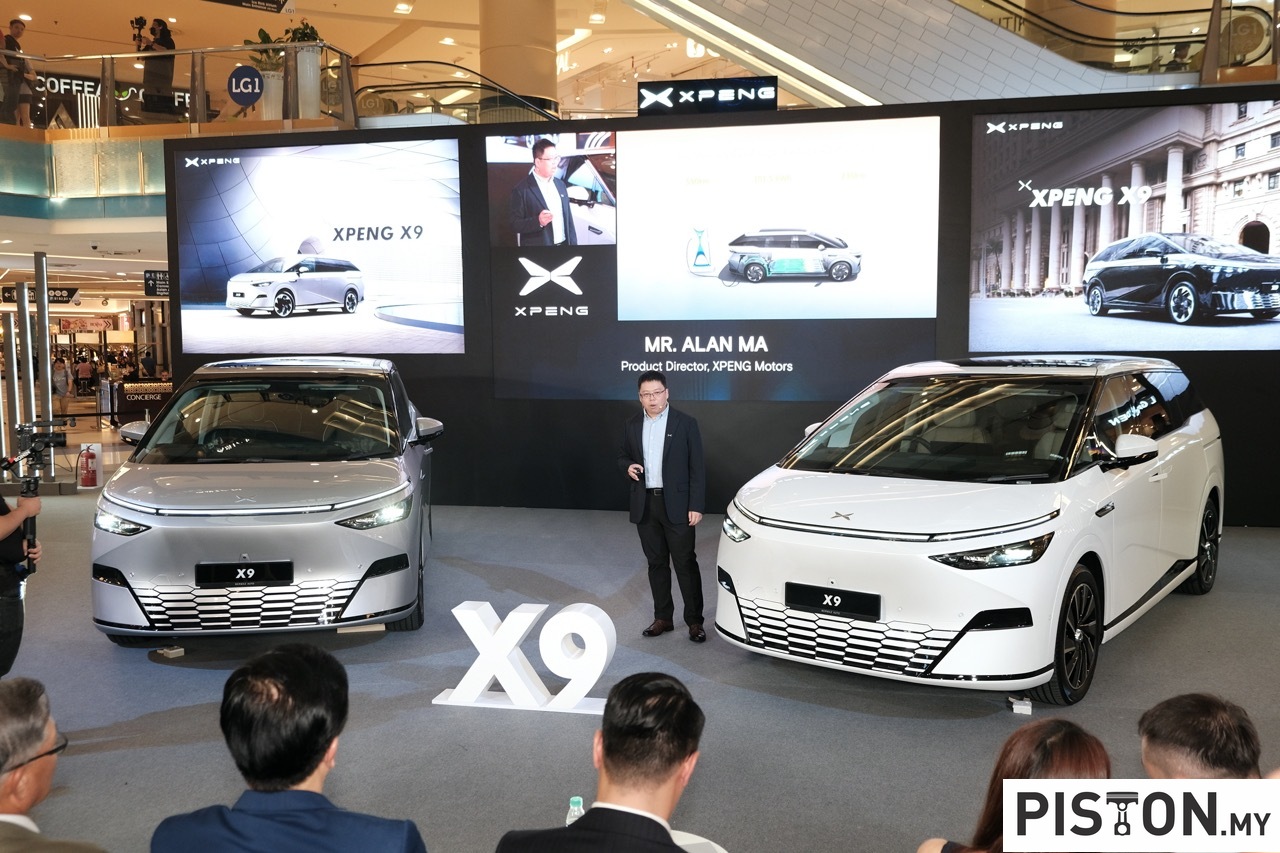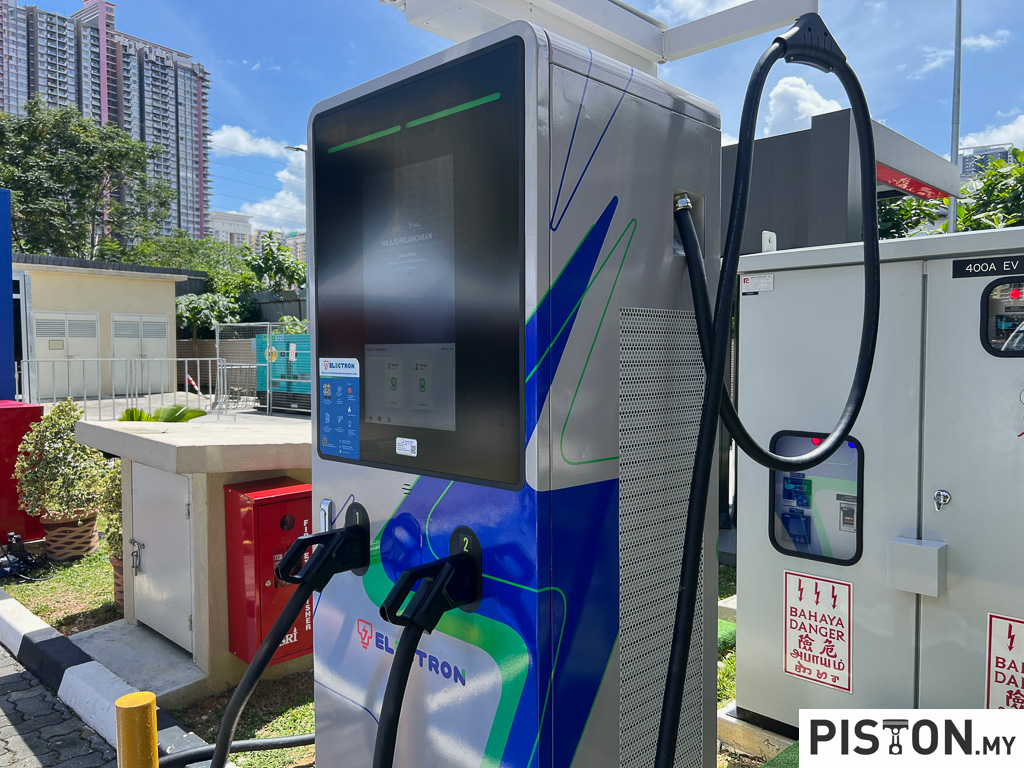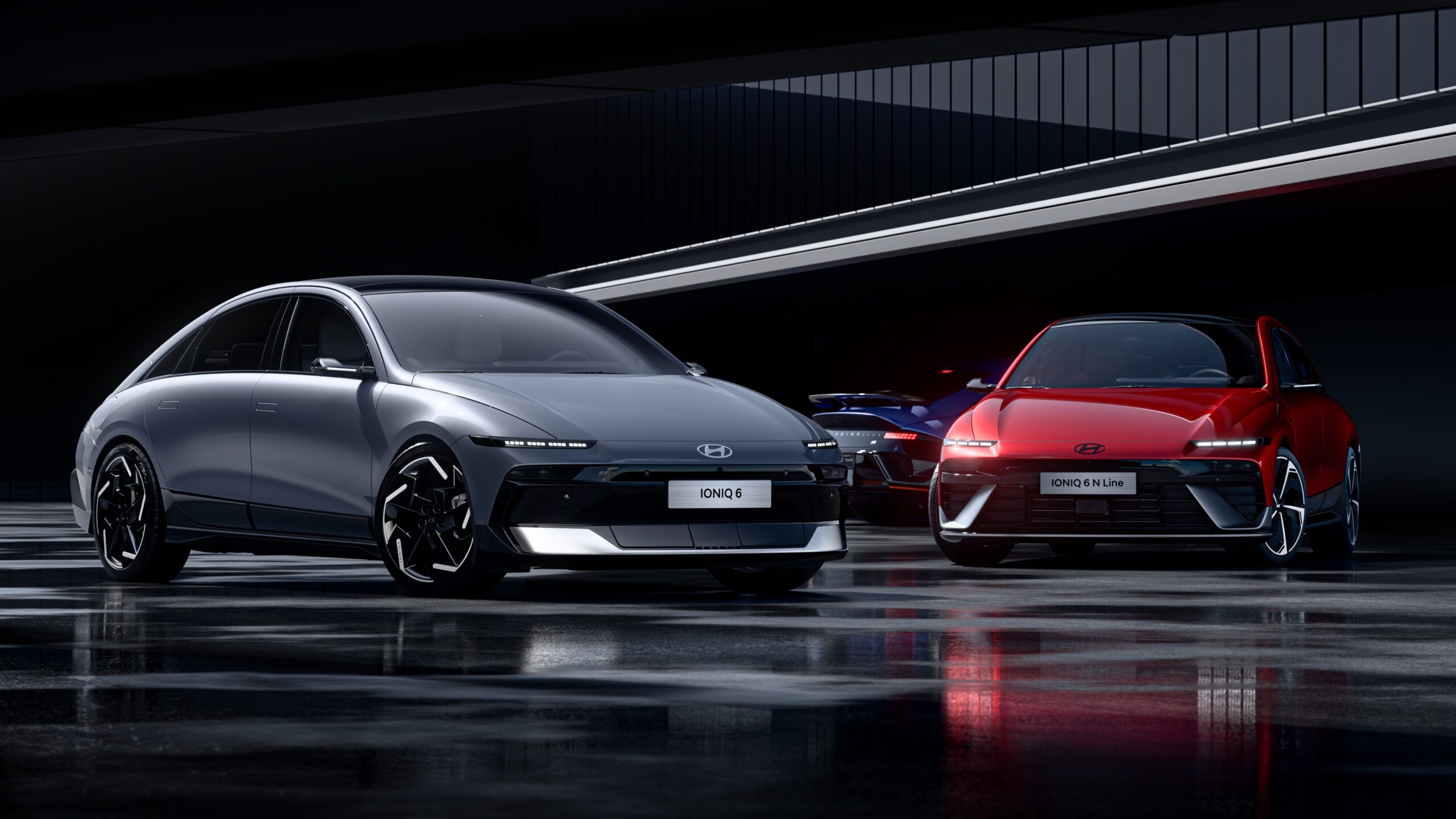Hydrogen is the most abundant element in the universe and from it, electricity can be created using a technology from the space program – the fuel cell. Through a chemical reaction with oxygen, electrical energy can be produced with only water as a by-product. The fuel cell is therefore a strong candidate to power electric vehicles – except that the technology is still very expensive and hydrogen stations are very limited.
Nevertheless, companies like Toyota have developed fuel cell electric vehicles (FCEV) and its Mirai model is already in its second generation and sold in selected markets. Recently, a Mirai set a Guinness World Record for a FCEV by travelling 845 miles (1,360 kms) on a full tank of hydrogen. The journey, which was done in southern California, beats an earlier world record set in France in May this year that achieved 1,003 kms.
The official record attempt was closely monitored by Guinness World Records officials and followed the strict rules and documentation procedures. The record distance achieved was more than double the EPA-estimated mileage that Toyota uses in marketing communications for the model.
The car was driven by a professional hypermiler and a partner over a period of 2 days over a route from the Toyota Technical Centre in California where Toyota’s fuel cell development group is based. The route used normal roads which included the Pacific Coast Highway and included rush hour traffic on the San Diego freeway. The Mirai was driven until the 3 hydrogen tanks were empty.
By the end of the trip, the Mirai had consumed a total of 5.65 kgs of hydrogen and passed 12 hydrogen stations along the drive routes without having to stop for refuelling. It emitted no carbon dioxide whereas a standard internal combustion engine vehicle, over the same distance, would have emitted about 300 kgs of the gas that is said to cause global warming.
Toyota adds that the record was achieved by drivers skilled in hypermiling techniques that optimized the Mirai’s vehicle performance under specific weather and driving conditions. . Additionally, as on the car’s Predictive Efficient Drive can learn repeatedly travelled routes to optimize charging and discharging of the battery to help maximize fuel economy and driving range. They also leveraged some basic fuel-efficient driving tips that any driver can learn but the car itself was a standard 2021 model on sale to the public.
The Mirai is priced from US$49,500 (about RM207,000) which is about 20% less than the first generation that went on sale in 2014. Buyers can receive state government incentives to lower the purchase price. Hydrogen is sold by weight and in California, the price per kg is around US$16 (about RM67). To fill all 3 tanks on board, the amount needed would be 5.65 kgs which would cost about US$90 (about RM376) and can provide up to 640 kms of driving if you are not trying to set a record. The electric powertrain generates 128 kW of power which is equivalent to 174 ps with 300 Nm of torque to give a claimed 0 to 100 km/h time of 9.7 seconds.
Toyota Mirai FCEV fleet in Germany clocks total of over 5 million kms




